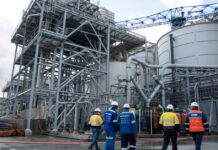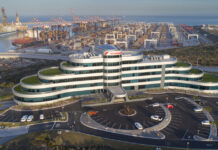AS with many building materials, there are noteworthy potential risks involved in handling or working with cement or cement mixes, says Bryan Perrie, CEO of Cement & Concrete SA (CCSA).
Perrie says when dry cement is exposed to water a chemical reaction called hydration takes place, resulting in an alkaline mixture that can be caustic. “This could cause alkali burns on the skin so safety measures should be observed to prevent fresh concrete or its bleed water contacting the skin,” he cautions.
Perrie says other organic body tissue (for example, mucous membrane) can also be attacked by strong alkalis, leading to burns.
“The use of cement inevitably creates dust, as from operations such as handling aggregates or cutting concrete. This dust is suspended in the air in the working area and inhaled by people on site, potentially causing irritation of the nose and throat, as well as eyes. So, airborne cement dust should be kept to a minimum but should this be impractical, goggles and dust masks should be worn.
“Many aggregates emit fine silica dusts created when crushing or handling these aggregates could cause lung problems, and precautions should be observed to avoid breathing in such dusts.
“Dust from demolishing or cutting hardened concrete may contain unhydrated cement and could cause respiratory problems. In addition, if the coarse or fine aggregate used in making the concrete contains crystalline silica, inhaling these fine silica particles could expose workers to occupational lung disease. The use of suitable respiratory protective equipment such as dust masks is recommended,” Perrie adds.
He adds that particular care should be taken to ensure that:
* Normal and protective clothing does not become soaked with wet concrete or concrete fluids as this could result in extended exposure leading to skin tissue damage that can be severe; and
* Workers do not kneel on fresh concrete during placing, compacting and finishing operations. If kneeling is unavoidable, thick waterproof kneepads should be worn and a kneeling board used to prevent the pads sinking into the fresh concrete.
“Protective clothing should also be regularly and properly washed to keep it clean and free of concrete. Any areas that have been accidentally splashed with wet concrete should be rinsed clean with water as soon as possible,” Perrie states.
“Guide to the safe use of portland cements and concrete”, a free leaflet that identifies the areas of risk, provides guidance on how to avoid unprotected exposure, and outlines basic first aid procedures, can be downloaded free of charge from the CCSA website: www.cemcon-sa.org.za. or email info@cemcon-sa.org.za for more information.















